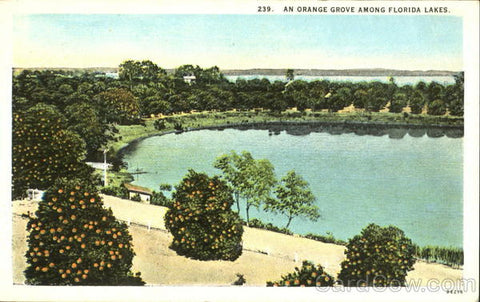Indian River Citrus Fruit is the most famous and succulent of all the world's oranges and grapefruit. Indian River Fruit, in our humble yet popular opinion, is the best citrus grown in the world - literally! Indian River County benefits from the best climate, soil and geological conditions to produce the perfect balance of sweet and acid in a citrus fruit. This balance is what makes an incredibly satisfying and nutritious fruit.
Learn the history of citrus in Florida and how our groves came to Indian River County...
Christopher Columbus brought the first orange seeds and seedlings to the New World on his second voyage in 1493. The early Spanish explorers planted the first orange trees around St. Augustine, Florida, sometime between 1513 and 1565. It is believed that Ponce De Leon is the first "farmer" who planted orange tree seeds in the Florida soil.
The earliest groves developed around two sea ports, St. Augustine and Tampa. In 1806, Count Odet Phillippe, who left his native France for the new world, introduced grapefruit to Florida. The state's first grapefruit grove was planted near Tampa in 1823.
In Florida, there are about 750,000 acres of citrus groves and more than 100 million citrus trees. Most citrus is grown in the southern two-thirds of the Florida peninsula, where there is low probability for a freeze. After a series of freezes in the 1980's, citrus growers gradually migrated south and east from central and northern regions. Although Indian River County is just below the "freeze line".

State Representative Andrew W. Young (who also happened to be Vero's mayor and one of the local movie theater owners), sponsored a bill which would remove Vero from St. Lucie County, thereby creating a new county. After rigorous debate, on a hot afternoon in May, 1925, Indian River County was born, and Vero became the county seat.
Entrepreneurs and farmers like Thomas Peebles began planting citrus in Indian River in the 1940's. Mr. Peebles was followed by his son-in-law Arthur R. Jones and then his son Tom Jones who currently owns and operates Vero's Hyatt Fruit Company. Many fruit shippers have come and gone in the county seat of Vero Beach. But it's the family run companies like Hyatt Fruit Company who have been around since the forties that are the best companies from which to order your Florida fruit (if we do say so ourselves).

It's the chemical make-up of soil. Florida's unique sandy soil and subtropical climate have proven to be ideal for growing the seeds that early settlers planted. The soil conditions in Indian River County and along the rest of the eastern seaboard of Florida are perfect for growing sweet juicy oranges and grapefruit.
Indian River soil is rich in calcium and other minerals that abet citrus groves. The nearness to the salt water of the Atlantic Ocean also has a major bearing on the really exceptional good taste of Indian River citrus, but, most importantly, citrus needs approximately one inch of water per week to bear good citrus.
Orange juice is tested for two main attributes -- brix and acid. From these two attributes, the sugar:acid ratio, which determines the flavor of the juice, is determined. Juice must meet minimum standards in order for it to be sold as 100% Florida Orange Juice.
The brix content (mostly soluble sugars) is determined using a hydrometer to measure the specific gravity, which is converted to degrees brix. Then, using a titration method, the percent acid is determined using sodium hydroxide and a phenolphthalein indicator. The ratio of the brix to the acid content can then be calculated. The minimum maturity for oranges varies during the season, but generally it is a minimum of 8.50 brix with a 10.00 to 1 ratio.

Florida oranges and grapefruit are fat-free and sodium-free. An excellent source of Vitamin C, a medium-sized orange averages only about 70 calories. Vitamin C is a powerful "antioxidant".
